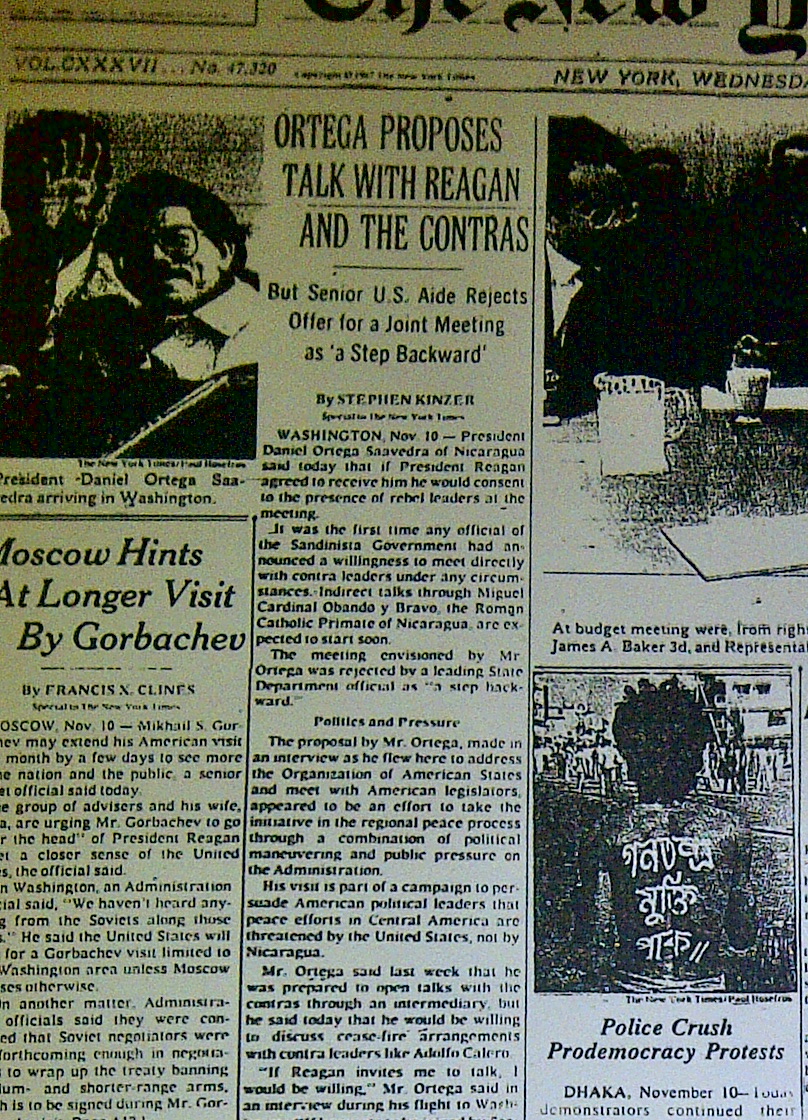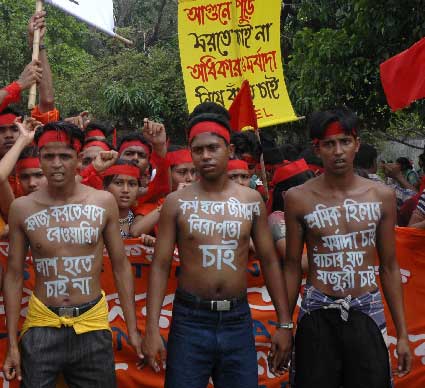- Police Crush Pro Democracy Movement – 1987
Nobel prize poet laureate Rabindranath Tagore has a famous song cherished by Bengali activists which loosely translates to: If no one heeds your call, then travel the road by yourself. This has been interpreted as a call for courage and an inspiration to chart a path for social justice on one’s own. But does that make a social movement?
Of course, quotes abound on the power of the individual or small group of individuals. Many love Margaret Meade’s oft quoted phrase, “Never doubt that a small group of thoughtful, committed citizens can change the world.” It may not be enough to be the sole sojourner for justice; you may need to get a small group.
What if you have gathered a large group, and make your demands, but there is no media coverage from mainstream press like New York Times, does it count?
Of course, it does, we know. Yet, we clamor for the mainstream coverage. Viewing press like NYT and broadcast media like CNN as being part of the power center, the coverage of social movements suggests a move away from the fringes and margins. There is a sense that a movement is legitimated if covered positively in NYT, especially if the Editorial Board gives its endorsement.
In a liberal democracy, where free press is valued, social movements must be covered. In fact, there should be a dedicated column on social movements around the world. NYT should add to its Real Estate and Business sections, a section on Social Movements. Media like NYT and CNN should do so not because situated in the “center” or mainstream of media, they should acknowledge those in the margins. Rather, because their continuance depend on a thriving social movement.
Social movements are the constituencies of major news outlets. In democratic speak, they are accountable to those movements.
We should continue to press for more media coverage of specific movements, but there should be greater attention paid by the press to highlight social movements where people are exercising the right to speak and voice contrary views. In doing so, these movements buoy media.
Each time, an individual or group of individuals demand to be heard on an account of injustice, the major news outlets must be prioritize those voices. Media depend on the invocation by activists of their right to free speech and assembly because if they do not take those personal risks then the media outlets can’t exercise theirs either. Social movements don’t need media for their survival – they will pour into Internet and create other social media, as they have done.
But, mainstream media need the vibrant and energizing voices of social movements to ensure that this abstract right to free speech, freedom of assembly is protected. Bangladeshis value this right to such an extent that they mark that right on their bodies. All the news that is print to print is not on some paper, it is marked on the body.
In 1980s, when Bangladesh was undergoing a massive democracy movement, the NYT did not cover the movement on the front cover. An artist imposed the body of a protestor with the slogan, “Democracy Now” on to a fake NYT cover. This is the picture at the beginning of the post. It was symbolic, but it communicated a powerful point, about who gets to decide what is fit to print. What news is newsworthy? Even further, what movement is significant enough to warrant coverage? This was an important point to make. However, in doing so, the artist does not disrupt the notion of who is accountable to whom?
I prefer the artistry of the activists above who demand the right to safe workplace after the fires in garment factory. Using their bodies, as workers, as the physical site of their freedom of expression, they don’t seek to clamor for space in the NYT. They demand to be acknowledged on their own terms. The exercise of free speech is not embodied in the four corners of the newspaper or the television screen. The margin of what is a social movement is not determined by what is written on those pages. It is exercised through one individual, thoughtful group, or a social movement. There the margins of free speech are redrawn and renegotiated, and the power that mainstream press exercises in determining the news fit to print is shifted away from those pages and back to where it matters most – the person who walks the path alone, thoughtful small group or a mass based movement.
Fast forward to 2013, there is a movement in Bangladesh. Yes, there is. In the United States, you would not know as was true in 1987 that there is a massive democracy movement led by youth in Bangladesh and inspiring Bangladeshi American youth here from California to New York. There may be disagreements about the direction and demands for this movement. Generally, the protestors are calling for rigorous prosecution of war criminals from Bangladesh’s 1971 war of independence. It is dubbed the Shahbagh Movement after a location in Dhaka where the protestors have occupied. The movement began with the call from Internet activists, and the protestors are mostly young, born after 1971. On this media silence, activists use the internet and social media to get their message across. http://shahbagmovement.com Again, like the workers who protest the unsafe working conditions in the garment factory, the Shahbagh protestors are renegotiating the space in which they protest: off the pages, to the square, and onto social media.
If mainstream media do not answer to its constituencies, here social movements, it will become archane like a declining government of yesteryear, and like a political party that has forgotten its base, may stand to face an democratic election upset.







All good thoughts. I’ve thought about this a lot too, and there is another side you didn’t discuss that I am happy to share with you.
I was a mainstream journalist for quite a long time. What I am seeing now is an incremental rise in the status and perceived credibility of pamphleteering. (the modern version which takes place mostly online – small operations)
The credibility of this kind of speaking out is indeed increasing, subtlety and gradually. It may seem imperceptible. I think it has more perceived credibility than five years ago.
What is causing that may be the fact that the crisis in mainstream media came to a head a few years past — around 2008; with the passage of time, people are coming very slowly to realize the need to listen to voices published in odd places, without a major media brand affixed to it.
There is less a sense that it is some embarrassing thing to speak out as an individual or a small group in an online pub. It is increasingly accepted that one has little choice, as mainstream media shrinks.
I think alternative sources were dismissed more easily a few years ago.
It’s right to seek mainstream coverage but I think the resurgence of the “ancient” forms of press in the U.S. has some surprises in store for us yet. There is something also rising up.
When I say ancient, I refer to the press from colonial times to the beginning of the newspaper chains in the 20th century (not very long ago) Some of the most influential publications back then were even one-person operations.
There are tons out there now, and the field is slowly catching up to them to become more leveled. Tons out there, and, this is key, increasingly taking a seat at the table. Can we soon say tons out there and tons at the table? I think so. And wasn’t that a better way to do news anyway. Doesn’t it bring relief for those crying for more real egalitarianism?
It is what it is — not saying a panacea — but not nothing either.
A social movement section at the Times is a fascinating idea. The NYT cut or cut back on sections in recent years: sports, regional editions. But who knows. A social-movement section could be more popular than sports is.
thanks for the article